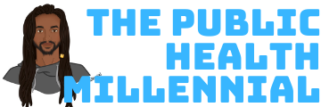Lights on before lights off – the importance of sexual education and self-advocacy.
Welcome to StayTrillHill.
How are things going on your end? 2023 felt like a whirlwind and now we’re almost done with a quarter of 2024. Time is flying! It’s easy to lose track of to-do list items such as changing your toothbrush head, calling your long distance aunt and getting a sexually transmitted infection (STI) screening.
1 in 5 people have an STI at any given day.
STI screenings should be in your personal health plan, even if you are in a monogamous relationship. STI screenings should be done every 3 months.
“Screening is a fundamental concept that links clinical practice in individuals, with public health practice in populations” (Speechley et. al 2017).
It’s easier to put out a fire when it’s a spark and not necessarily a house fire.
Sexual Education
Unfortunately, I am not talking about the hit Netflix series. (But it is a great show that I do recommend). Many of you may have had the awkward “birds and the bees” talk with your guardians growing up. If you were like me, you tried your best to tune out the conversation.
Or you may have had an awkward middle school class talking about sexual education and you were trying hard not to make eye contact with your crush. Or in high school, having to carry an egg or baby and being taught the importance of using a condom. Then ultimately in college and having access to free condoms.
Now for those in adulthood, how often are you engaging in challenging and healthy conversations about your sexual health??
Lets rewind and define some key terms.
What is an STI? An STI is a sexually transmitted infection.You get them by having sexual contact with someone who already has one (the only way to know is to be tested). An infection happens when a virus, bacteria, or parasite enters your body, and your immune system kicks in to try to fight it. Disease happens when the infection causes symptoms, damages parts of your body, and leads to illness. Many infections never develop into diseases. (Planned parenthood 2024)
What is an STD? STD or sexually transmitted diseases are used interchangeably with STIs …In health education, STI and STD are the same thing. In recent years, public health has preferred the term STI because the word “disease” carries more fear, and stigma. Using the term STIs helps to combat stigma and misinformation around sexual health.
Many STI’s – like Chlamydia, Gonorrhea or HPV – often have no signs or symptoms. A person with a STI can give it to you even when they do not feel sick. Because they may not show signs nor symptoms but are carrying the infection and can pass it to others through unprotected sexual contact. This is why routine screening is important.
Importance of Sexual Education
Sexual education is important because it empowers individuals with the knowledge and skills needed to make informed decisions about their sexual health, relationships, and overall well-being.
Increased sexual education leads to lower:
- STI rates
- Unintended pregnancies
- Healthier relationships
With those benefits, we should be discussing sexual health more regularly. I recognize that some folks may have taboos around it or these should be “closed door conversations” but having these conversations allow for self advocacy.
Sexual self advocacy can be more difficult than normal self advocacy.
Self advocacy in a relationship can look like sharing with your partner what restaurant you’d like to go to for dinner. Sexual self advocacy is knowing your rights and responsibilities when in a relationship. Sexual self advocacy means Feeling free to speak up to your partner and tell them what you want and don’t want in a relationship.
Sexual self advocacy means knowing your rights and responsibilities. You have the right to set boundaries, feel comfortable asking questions and feeling good about yourself. It can be challenging to think about illness when you’re feeling attracted to someone.
Breaking the stigma
1 in 5 people were diagnosed with a STI or had an STI on any given day in 2018 (CDC 2022).
Do not feel ashamed if you have had a STI. It’s just an infection. Don’t feel bad, continue to seek necessary treatment.. The most common STIs -syphilis, gonorrhea, chlamydia and trichomoniasis – are generally treatable with a one-dose treatment (WHO 2024).
STI stigmatization often comes from lack of information or education. It is then perpetuated by the language we use in speaking about it.
It is important to speak up about being tested and advocating for yourself whether single, in an ethically non-monogamous or monogamous relationship, or married. Breaking stigmas starts with engaging in conversations.
Silence around the topic and avoiding getting tested harms your physical, mental and emotional health.(planned parenthood 2023)
Awareness and education
You may be wondering, “How do I bring this up to my partner?”
While this may be challenging, it is an important conversation to protect you and your partner’s health. Keep it positive and try not to judge or use hurtful words. You could even suggest getting tested together. Remember that STIs don’t always show up quickly. “Sexually transmitted infection symptoms may appear a few days after exposure. But it may take years before you have any noticeable problems, depending on what’s causing the STI (Mayo Clinic 2023). You or your partner may have become infected before you got together, without realizing it.
If you need testing, treatment or looking to engage in a conversation, you can visit a planned parenthood health center or other healthcare provider. Keep the conversation open and going. There should be no stigma in sexual health. If you can sing about it in songs we can talk about it in conversations.
Until next time,
StayTrill Hill



